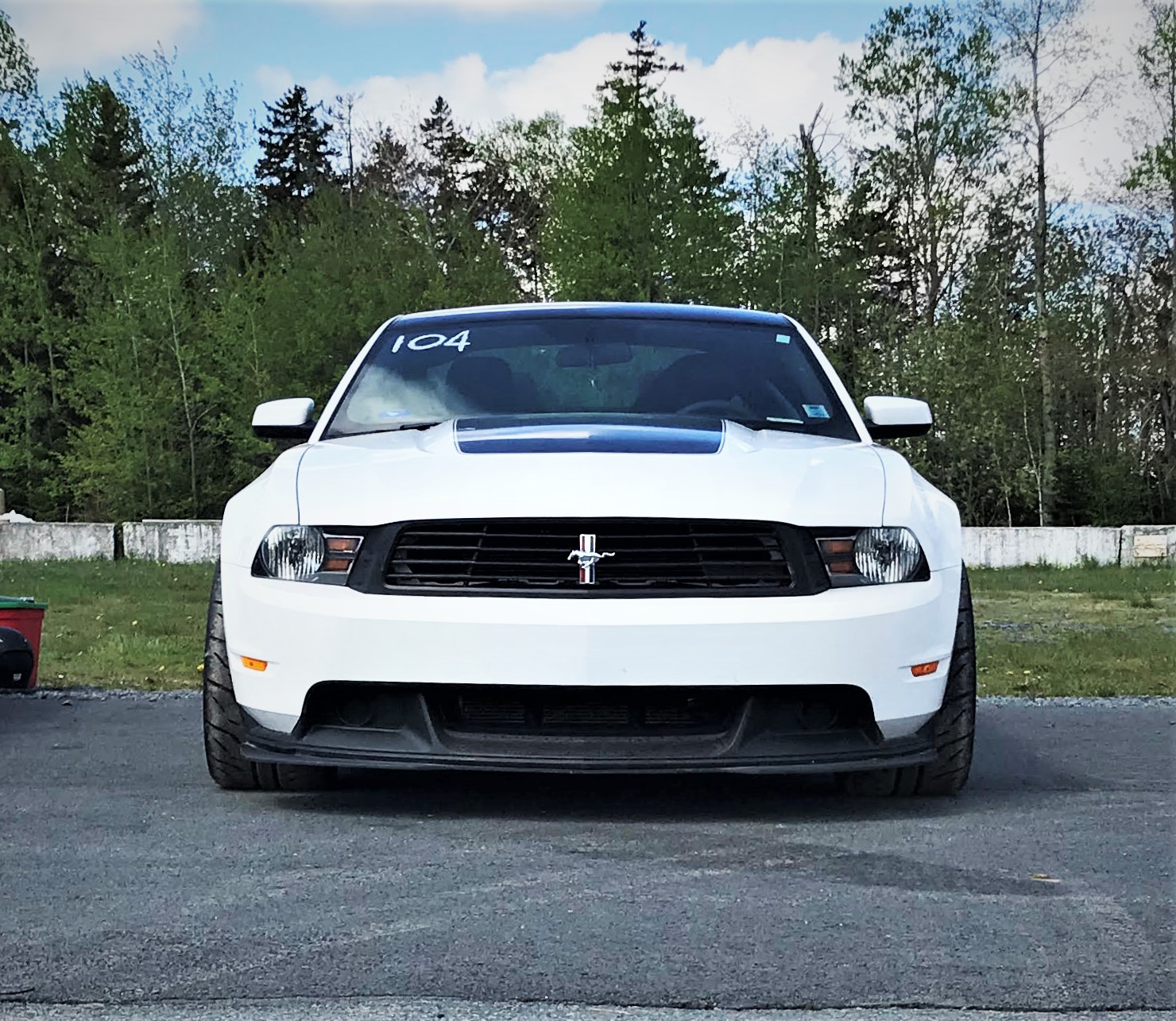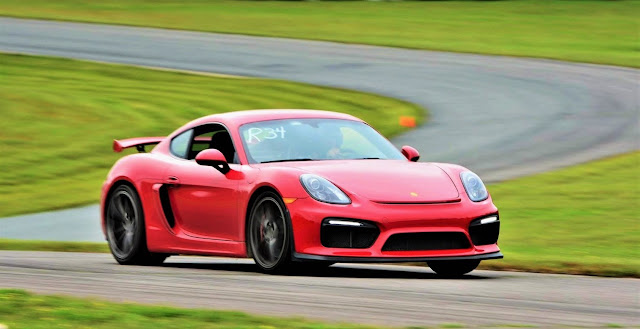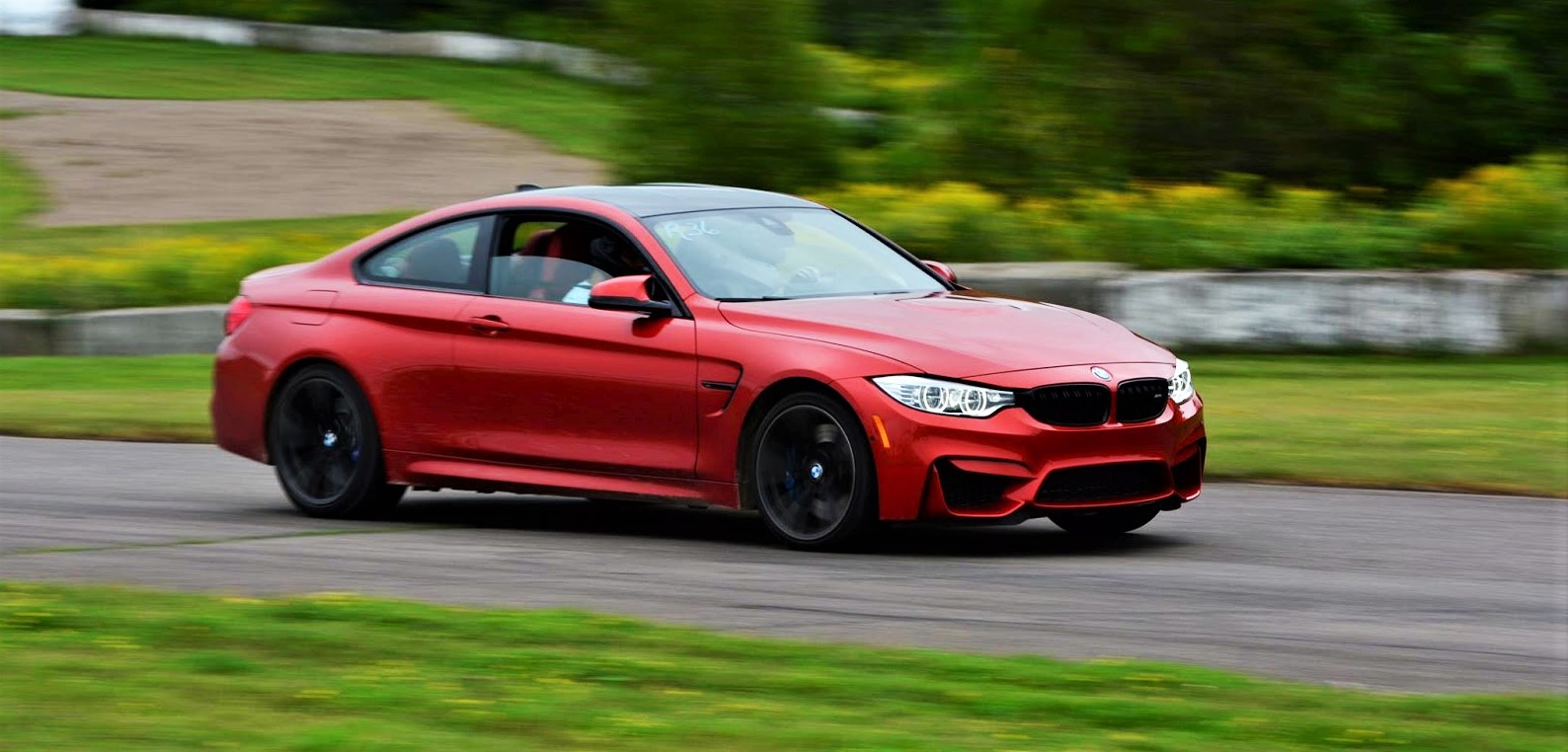Get your pitchforks sharpened and your torches lit up. There is a new Camaro vs Mustang comparison test and one of them walks the other. This time, it is the most recent comparison test between a 2018 Camaro SS 1LE and a 2018 Mustang GT posted by Motor Trend a few weeks ago. The results are the stuff of classic and long lasting brand rivalry so let's dive straight in. There is so much I want to talk about that it was difficult to pick where to start. Power seems to be the simplest and it's the one most are interested in so I'll start with that.
| 2018 Camaro SS 1LE | 2018 Mustang GT Perf. Pack | |
|---|---|---|
| 0-30 mph | 1.8 s | 1.9 s |
| 0-40 mph | 2.5 s | 2.6 s |
| 0-50 mph | 3.2 s | 3.5 s |
| 0-60 mph | 4.1 s | 4.4 s |
| 0-70 mph | 5.1 s | 5.4 s |
| 0-80 mph | 6.5 s | 6.7 s |
| 0-90 mph | 7.9 s | 8.1 s |
| 0-100 mph | 9.4 s | 9.7 s |
| Passing, 45-65 mph | 1.8 s | 1.9 s |
| 1/4 mile | 12.5 s @ 115.2 mph | 12.6 sec @ 115.1 mph |
Before we compare to the Camaro, let's compare to the pre-refresh S550 Mustang. Did Ford deliver on its claimed 25 hp gain starting with the 2018 Mustang GT? OH, YES. If you compare the results here with Motor Trend's previous comparison test of the 2016 Camaro SS and Mustang GT, the difference is very substantial. The new Mustang is more than a full second (1.1 sec) quicker to 100 mph. Trap speed is up by a whopping 5.1 mph. That means this car isn't making 460 hp. The new car leaves the "old" S550 in the dust. Here are the old numbers:
| 2016 Camaro SS | 2016 Mustang GT Perf. Pack | |
|---|---|---|
0-30 mph
|
1.7 s
|
1.7 s
|
0-40 mph
|
2.4 s
|
2.4 s
|
0-50 mph
|
3.1 s
|
3.4 s
|
0-60 mph
|
4.0 s
|
4.6 s
|
0-70 mph
|
5.0 s
|
5.8 s
|
0-80 mph
|
6.3 s
|
7.1 s
|
0-90 mph
|
7.7 s
|
8.9 s
|
0-100 mph
|
9.3 s
|
10.8 s
|
Passing, 45-65 mph
|
1.8 s
|
2.2 s
|
1/4 mile
|
12.4 s @ 114.6 mph
|
12.9 s @ 110.0 mph
|
See, you don't gain 5.1 mph by adding 25 hp. It's just not happening, not with a race weight of approx. 4,100 lb. (car, driver, test equipment). Comparing the Camaro's test numbers, you find that they are very close, with better ET numbers to 60 mph, 100 mph, and 1/4 mile in the old test, but worse trap speed, so that could easily be attributed to nailing the launch a bit better (which they did, based on the 0-30 mph number). So what do the improved numbers mean for the Mustang? Well, I don't like to use Hale's formula too often because some people take it as gospel, but it's very useful when you know how/when to use it. Using it on the "old" S550 GT (i.e. approx. 4,025 lb race weight and 435 hp), the car should trap around 111.5 mph. If you even use that as baseline, to gain 3.6 mph (i.e. get the new 115.1 mph trap), you need another 50 hp (DOUBLE Ford's claim), or 485 overall. If you use the previous MT test of 110 mph as baseline - meaning the car gained 5.1 mph - you need another 65 hp, which would put crank output at 500 hp.
This would be your run of the mill Mustang GT, right off the showroom floor, with a true five point oh, naturally aspirated V8 making 500 hp and 100 hp/l. My first thought was: I wonder what they are dyno'ing at. So I checked. Late Model Restoration (LMR) dyno'ed one and it put down 415.65 hp to the wheels. That's exactly 489 hp crank with 15% drivetrain losses. Another stock dyno on YouTube put down between 426.60 whp and 430.96 whp in 3 runs, with the lowest being the first run and wheel hp increasing incrementally each run. That's nearly 502-507 hp crank. American Muscle dyno'ed 437 whp on 93 gas, or 514 crank hp. Ah, but dynos are only really good for comparison, of course, so the numbers should be taken with a grain of salt. Sure. How about we compare then? When American Muscle dyno'ed a stock 2015 Mustang GT, it put down 370 whp, almost exactly 435 hp at the crank with 15% drivetrain losses. More importantly, though, there's a gain of 67 whp on the same dyno, or about 79 hp at the crank. Adding that to the 435 hp rating of the pre-refresh S550, you end up with 514 hp at the crank. Any questions?
Motor Trend agrees, coming to the conclusion that Ford is sandbagging the output to protect the GT350's hierarchy. Why, then, is the Mustang a tick slower in 0-60 and 1/4 mile? Traction and low end power. Motor Trend struggled (relative to the Mustang) to get the Camaro to slide or do burnouts, indicating much better traction. The lateral grip number is a lot higher for the Camaro, confirming overall grip is certainly higher. As far as low end power, the Camaro's small block Chevy with its deep breathing, big cube, 2 valve design lets it make more power in the low end, which translates to better (quicker) acceleration until you hit the first couple of gear changes, at which point you start to use a narrower slice of the rpm range and top end becomes much more of a factor. That low end power advantage until you are out of the first couple of gears really shows up in 0-60 numbers and a little in 1/4 mile as well. Once you're in higher revs, it's the Mustang's territory. The Mustang is 0.3 s behind to 60 mph, which it shortens to 0.1 s behind to 1/4 mile and nearly the same trap. And when tested to about a mile, the Mustang was going 159 mph to the Camaro's "only" 151 mph. Remember, the Mustang was actually 0.1 mph slower at the end of the 1/4 mile, meaning that between the 1/4 mile and 1 mile marks, the Mustang started gaining and never let up. That's a strong top end.
So that's power covered, and covered well by the Mustang. What about handling? Here, things start to fall apart a bit for the Mustang. Grip? Camaro's better. Braking? Yep, Camaro's got that too. Lap times? The Camaro walked away with it.
So that's power covered, and covered well by the Mustang. What about handling? Here, things start to fall apart a bit for the Mustang. Grip? Camaro's better. Braking? Yep, Camaro's got that too. Lap times? The Camaro walked away with it.
| 2018 Camaro SS 1LE | 2018 Mustang GT Perf. Pack | |
|---|---|---|
Braking, 60-0 mph
|
93 ft
|
104 ft
|
Grip (lateral g,)
|
1.12 g (avg)
|
1.00 g (avg)
|
MT figure eight
|
22.9 sec @ 0.91 g (avg)
|
24.0 sec @ 0.83 g (avg)
|
Willow Springs lap time
|
1:20.67 sec
|
1:23.97 sec
|
I know what you're thinking. It looks like the Camaro beat the Mustang, right? Wrong. It destroyed it. To put things into perspective, this lowly Camaro SS 1LE is basically two tenths of a second away from a C6 Corvette Z06 (the one with the Z07 package). A FRIGGIN Z06! Let that sink in. The lower, wider, several hundred pounds lighter, aluminum frame, MORE powerful, two seater Corvette Z06 is about two tenths of a second quicker than this Camaro. It even beat the Cayman GT4, which "only" managed a 1:21.74. That's more than 1 second slower than the Camaro on a minute twenty lap, or how St. Peter at the Pearly Gates explains eternity to track guys and gals. The Mustang is really good, but it runs with its group - cars like the BMW M4, Lexus RC-F, etc. The Camaro is in a different league on track.
Why is the Mustang that far behind? I was massively disappointed when I read the numbers, even though I am aware that this is the standard performance pack, not the upcoming performance pack level 2. It just shouldn't be that far apart. Or that's what I thought at first, anyway.. If you're a Camaro fan, I suggest you skip this and the next two paragraphs because they'll sound like a bag of potatoes' worth of excuses. But here's an interesting thing I noticed: comparing the Mustang's handling results now to the previous test I have been using as baseline for power, you find that the new one (with the performance pack) is nearly identical to the Camaro SS with the Magnetic dampers but without the 1LE package. In fact, braking is identical and average lateral g is identical. MT figure eight is actually better for the Mustang by a tenth.
| 2016 Camaro SS | 2016 Mustang GT Perf. Pack | |
|---|---|---|
Braking, 60-0 mph
|
104 ft
|
109 ft
|
Grip (lateral g,)
|
1.00 g (avg)
|
0.96 g (avg)
|
MT figure eight
|
24.1 sec @ 0.85 g (avg)
|
24.4 sec @ 0.82 g (avg)
|
You might say that that's the best Ford could muster, and I would have considered believing that if the Camaro 1LE hasn't been out for a couple of years already. Or if the Mustang GT4 was hopeless against the Camaro GT4 in racing. But, neither is the case. Basically, if you forget about the yet-to-be-tested perf. pack level 2, Ford says you can have a very softly sprung Grant Tourer (relatively) or a slightly softly sprung Grand Tourer (with the performance pack). But if you want a track car, get a Shelby. I am 100% convinced that Ford bench-marked the non-1LE Camaro for its performance package. As much as I hate it, being a guy who loves to go to the track, I also realize why Ford is doing it. People want it that way.
Here's what I think Ford did and continues to do since the redesign of the Mustang with the S550: Ford asked its engineers how it can take the Mustang and make it better for people who may not be interested in a pony car. Chevy, on the other hand, took the Camaro and asked how it can make it better, period - a better Camaro. Subtle difference, but a big impact on the end result. I read somewhere that when a Chevy designer was asked why the new (6th gen) Camaro still has bad sight-lines, they said because owners didn't say it was something that really needed improvement. Now, you ask ANYONE who doesn't own a 5th or 6th gen Camaro what the visibility is like and they'll say very poor (read my review here to see what I think: 2016 Camaro SS vs Mustang GT). Clearly, Chevy didn't try to go after those people that didn't like the old looks or visibility, it seems, just tried to make the Camaro better for people who like that sort of car in the first place. Ford did the exact opposite.
It ditched the solid axle, despite many diehard Mustang fans liking it, to make the car appeal to more people. It made it more grown up than the S197, with a wider appeal, and went and sold it outside North America with great success. It gets better too. When BMW went and made the 3-series appeal to more people, they numbed it too much. It lost a lot of the 3-series magic. Ford, on the other hand, seem to have captured the essence of the Muscle car even better. It is more comfortable than the Camaro, a little more practical/spacious, it is better at "cowboy science" as Motor Trend called it (i.e. burnouts, noise, etc.) and at the end of the day it is still huge fun, capable, and engaging. The Camaro took itself more seriously and became a benchmark, much more of a sports car than a muscle car, but the (sales) numbers suggest that more people like the more laid back Mustang formula. You can't blame Ford for the Mustang trailing the Camaro's handling any more than you blame Porsche for PDK. It's simply what the market wants.
Unfortunately for Ford, there's another side to this story (Camaro fans, you can start reading again). I actually do blame Porsche for PDK. Porsche should define what the ultimate 911 is like, not simply rely on the market to define it. They may say they keep or kept top GT-series models PDK-only because of lap times and performance, but it's all business and people's car-buying-money talks. When Porsche realized the demand for a manual 911 GT3, they made the 911 R, and then went and offered the manual as an option on the 991.2 GT3. If people stopped buying the new GT2 RS and demanded their $300k+ uber-performance car has 3 pedals and a manual, Porsche will sell a manual GT2 RS, guaranteed.
It's great that Ford builds a more practical, more day-to-day friendly muscle car that appeals to more people without going too soft, numb, or flabby. Sales numbers are easily in the Mustang's favour, so it seems Ford got the market better and generally speaking, you could conclude that people don't need a more track capable Mustang aside from the Shelby. But Ford needs to build a more track ready Mustang GT, even if fewer people need that. It's something that it owes the track rat fans of the platform, not to mention the Mustang nameplate. Sure, there is the GT350, but it is basically a $60k car (in the US, $80k CAD in Canada). Worse still, the gap between the GT performance pack and the SS 1LE is galactic in scale. GM now owns the track sports car on a budget segment. Ford reinvented it with the 2011 GT Brembo, and the Boss 302 but GM took the lead a year or two after and never gave it back. Motor Trend said it feels like there are 4,000 years of evolution separating the two. There should be no more than a thousand years, maybe two. Some argue that you can buy great Ford Performance parts, but you have always been able to do that with Mustangs. These parts are supposed to give you an even better performing car - an edge - not just barely close the gap between competitors. I give massive credit to GM for what it's doing with the Camaro. It's telling the market: this is what a modern pony car should be like, it takes names and embarrasses supercars on track. If you don't like it, screw you, go buy a Mustang.
The good news for Mustang fans is that there is a Performance Pack level 2 coming. And although Motor Trend says the SS 1LE and GT Performance Package have "similar performance rubber", I don't think so. For one, they had trouble breaking traction for burnouts after a couple of runs once the Camaro's Goodyear's got hot and too sticky. But even if you didn't know that, you could just tell by looking at the tires of both cars. The Goodyear Eagle F1 Supercar 3 have shallower tread depth, lower wear rating, and larger tread blocks than the Mustang's Michelin Pilot Sport 4S. Worse yet, the Camaro's front and rear tires are all 3 sizes wider than those on the Mustang. But don't worry, Ford is apparently aware of all of that. The performance pack level 2 will come with 305-section wide tires all around and they're stickier Michelin Pilot Sport Cup 2's. For better and for worse, Ford still sticks with the mechanical Torsen limited slip diff to Chevy's electronic LSD. I prefer the mechanical Torsen, personally, but it will never be as capable as the electronic type (you can read more about the differences in an earlier post Limited Slip Differentials - The Basics). With that said, I think the wider rubber and improved compound, combined with chassis tuning to suit and a wee bit of downforce will be enough to at least make it close (and very interesting).
If the above does work, then the refreshed Mustang is an absolute winner in my book. If not, then the Mustang is an excellent compromise for a Mustang fan looking to do a few track days, but ultimately, needs a few extra Benjamins in aftermarket parts to hold its own against the Camaro on track. Meanwhile, the Camaro may be more compromised on the street and day to day driving, but it's the one to watch out for on track. Time to wait and see. Next time, there will be no excuses for Ford. Here's hoping it doesn't need any.




















Comments
Post a Comment